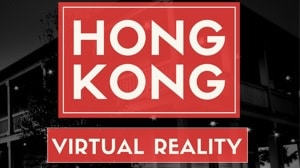Before the food we order gets served to our table or becomes available at the grocery store, it needs to undergo various steps that start from the creation of the menu down to the service of the table. The food industry, like other industries, requires networks of people that function towards one purpose, and processes that should flow flawlessly.
In today’s fast-paced and ever-evolving nature, the food industry must step up and utilize all of its potentials to deliver quality and convenience to consumers. An emerging way to address the need for modernization is through virtual reality. Here are some reasons why it is crucial to invest in this technology today.
High Quality and Interactive Employee Training
In revitalizing and re-branding the food industry, the creators and employees of the food industry must be the pioneers of championing the realization of the full potentials of virtual reality. This initiative can only stem from having enough knowledge and experience in the technology.
Current strategies in employee training are prone to variation depending on the region, members of the team, and the store. Through VR technology, it becomes possible to streamline the training process. Through the use of VR, one can create a space with a detailed visual world wherein employees can interact with tasks concerning their prospective jobs. The lessons can involve thousands of appropriate tasks that employees can mentally and physically learn through the created virtual world. Another advantage of adopting this technology is that their mistakes would not have high-cost consequences compared to real-time training too.
Furthermore, employers can allow modifications in the created space for training to enable a wide range of people with different learning styles, needs, and capabilities. This diversity could be an asset to the company and an avenue for possible innovations.
Augmented Customer Experience
Besides the people working for the industry, the customers are equally important since the services are created mainly for them. VR can enhance their dining experience by activating all the senses and immersing in a particular food journey as the value of experience over material gain becomes elevated more than ever. The customer’s participation in a food adventure with the help of VR is an integral part of the social identities people try to build.
Techniques that companies can employ are providing behind-the-scenes VR narratives during events, coordinated VR videos that add to the sensorial experience of consuming the food products, and VR tours involving the company. These techniques enhance the eating and drinking experiences dramatically. Also, this technology can be a powerful tool to educate and inspire people to take actions beyond the status quo.
Level Up Marketing
With this day and age, social media platforms are more powerful than any other forms of media. People can easily search about their topics of interest in the span of a few seconds. Because of this trend, it is imperative to maximize the use of social media in marketing the improvements made possible through VR.
VR allows creators and marketers to showcase their products beyond the physical realm. Information, particularly nutrition values, can be disseminated better through the use of VR. Companies can commission graphic artists and editors to create videos and interactive games for better representation of their products. Through the informed and thorough experience, consumers can be more attached to the product, more compelled to come back next time, and more likely to share their encounters through social media platforms and real-life conversations.
Greater Interactivity to Products
The core of the industry is the consumers that keep it going. The consumers get the upper hand at dictating the trajectory of the industry’s growth. Therefore, investment to the utmost satisfaction and engagement of the customers to the product is needed leverage for more exposure and, subsequently, higher sales.
Engaging customers with less attention span – as most people do nowadays – pose a challenge to creators. This challenge is worth their efforts as time proved again and again that digital interaction with customers leads to real action and better sales. The trick is to expand the imagination and attract the attention of the potential and returning consumers. Companies can conduct surveys and research geared toward understanding the target market and formulating ways to engage them using VR.
With the goal of being more interactive with the product, a way to fulfill that is through using 360 videos of store tours or store history with an exciting narration of the beginnings of the product or restaurant. An establishment of the trust between the creators and the customers happens when there is a sharing of information about the process. This established trust is one of the rare keys to having better relations with the customers.
Equip the People with Cooking Skills
As much as it is the goal to have customers come back to your store or restaurant as often as possible, it is a beneficial goal to equip the consumers with life skills such as cooking. A virtual space that helps people with interest to delve into the world of cooking can revolutionize the food industry. Creators can use real photographs as references for 3D models included in the virtual world. A virtual assistant to help with the learning of the skills may be an additional feature to the VR.
Personalized instructional materials contribute to better engagement of the customers. Through this, the customers may change the language, the quality of voice, the intensity of colors, and many more to maximize the learning experience. These options help VR to be more inclusive, more enjoyable, more remarkable, and more engaging than having to pay for online classes or teaching oneself to cook.
Conclusion on the Role of VR in the Food Industry
VR keeps on transforming the operation of the food industry and elevating the food experience of customers. It is evolving in ways that people couldn’t have thought possible. Slowly, it will be incorporated into the way food is prepared and served to consumers. It is only a matter of time before VR gains momentum in revolutionizing the food industry.
References:
https://techcrunch.com/2017/12/25/how-augmented-and-virtual-reality-will-reshape-the-food-industry/
https://www.mobileappdaily.com/2018/01/3/ar-vr-will-reinvent-the-food-industry

